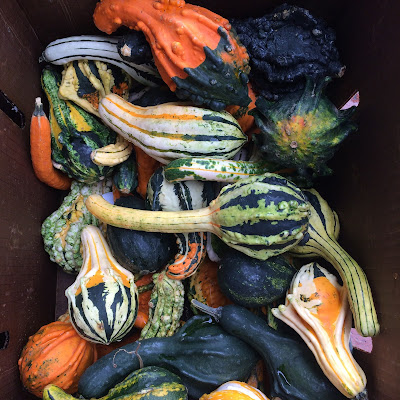Pumpkins are thought to have originated from Central America around 7,500 years ago, however they are now grown successfully all over the world and form a large part of autumn celebrations in North America and Europe. They are technically a type of squash and can come in all different shapes, sizes and colours! The most classically well-known orange pumpkins are actually called Connecticut Field Pumpkins or Harvest Moon pumpkins and these are usually used at Halloween because they are so good for carving.
Making Jack-o'-lanterns or carved pumpkins started in Ireland in 19th century where they carved faces out or turnips or mangel wurzels to ward off evil spirits. This practice became part of Halloween celebrations where they were used to represent supernatural beings on the eve of All Hallows or All Saints and is now synonymous with Halloween wherever it is celebrated.
Pumpkins also play a huge role in the American tradition of Thanksgiving. The Pilgrims apparently ate pumpkins and squashes that were native to New England and so gradually they became added to the Thanksgiving meal either as a savoury dish such as mashed pumpkin, or a sweet dish in the form of pumpkin pie.
A huge number of pumpkins are grown every year around the world. Around 700,000 tonnes of pumpkins are produced in the US each fall, but the number grown in China far exceeds this with around 8.1 million tonnes harvested each year. Sadly, many of these pumpkins are wasted as they are used for carving and decoration and then discarded into landfill. We can make more sustainably choices however, if we try to choose varieties that are more edible so the flesh, seeds and skin are not wasted. We can also make sure we compost any leftover pumpkin or put it out for birds, squirrels and foxes who may benefit from the extra food source at this time of year. Roasting the seeds is another good option for making the most of the pumpkin's inner contents. Finally, try to buy pumpkins from a local farm as this minimises the transport costs and emissions and supports local businesses. And it's sure to be a fun day out too!
To find out more, click here to read about pumpkins and the issue of unsustainability.
To find out how to use your pumpkin once Halloween is over, click here for some ideas!
🎃


